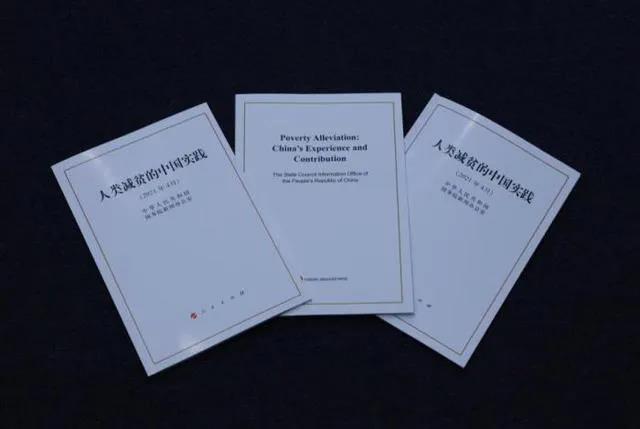侨音频道 China shares experience in poverty relief

Party's people-centered philosophy, commitment to task crucial to victory
Countries racing to curb dire poverty are advised to formulate relief plans based on conditions on the ground and to adopt a scientific attitude while deciding the poverty thresholds, aims and strategies for their own campaigns, a Chinese official said on Tuesday.
That's because every country and region faces different conditions, and decisions must be based on their actual situations, said Wang Zhengpu, head of the National Administration for Rural Vitalization, which was inaugurated in February, replacing the State Council Leading Group Office of Poverty Alleviation and Development, the former top antipoverty agency.
The Communist Party of China advanced the decades-long poverty reduction campaign in the world's most populous nation step by step with continuous efforts, and its tailor-made approach is among the invaluable experiences that underpin its success, Wang said at a news conference. He responded to media questions about how China's poverty relief experience could serve as a reference for other countries.
China pulled more than 770 million rural residents out of dire poverty after its embrace of wide-ranging reforms in 1978, according to a white paper titled Poverty Alleviation China's Experience and Contribution, which was released on Tuesday. It said the number of Chinese who escaped poverty accounted for more than 70 percent of the world's impoverished people in that period, measured by the poverty threshold set by the World Bank.
President Xi Jinping, who is also general secretary of the CPC Central Committee and chairman of the Central Military Commission, announced in February that China had scored a complete victory in its fight against absolute poverty.
Xu Lin, deputy head of the Publicity Department of the CPC Central Committee and minister of the State Council Information Office, said that the white paper offers a panoramic view of the country's prolonged poverty reduction cause.
The practice of poverty reduction in China shows that poverty is not destined, nor is poverty invincible, he said.
Summing up the experience that other nations wish to emulate, Wang said the accomplishments were made possible because of several key factors, such as the Party's people-centered philosophy and its commitment to the task, the country's sustained economic growth and the wide involvement of nongovernment players in the fight.
These are the political, institutional and organizational strengths of the CPC, he said.
This year also marks a watershed for China's rural policies. Before, the central authorities had prioritized poverty reduction in the vast countryside as part of a broader effort to build China into a moderately prosperous society in all respects by the CPC's centenary this year.
As China has achieved success in eradicating absolute poverty, the country has embarked on vitalizing its rural areas-a task that is central to the nation's modernization drive, which will continue up to midcentury.
To prevent large-scale backsliding into poverty, Wang said, the new administration will keep monitoring the income levels of still vulnerable families.
The principles are early identification, early intervention and early assistance, Wang said.
Also being watched are their access to safe homes, compulsory education, affordable healthcare and clean water-benchmarks that had been adopted to track poverty reduction progress in addition to the monetary poverty threshold of 2,300 yuan ($351) annual per capita income. That threshold was set more than a decade ago and adjusted annually for inflation. Hong Tianyun, a deputy director of the administration, said it fits China's situation.
The administration has created a five-year transition period during which the favorable policies adopted in the poverty-reduction era will be kept in place. Officials have made pledges to support industrial development in less-developed regions and maintain support from across the whole of society.
Hong said at the news conference that follow-up assistance is of utmost importance among the 9.6 million impoverished rural residents who moved out of isolated hamlets between 2016 and last year, the scale of which is globally unprecedented.
More vocational training will be rolled out for them and efforts will be made to develop local industries that can create jobs that fit with the local demographics and boost community services, he said.
We'll work to bolster the sense of belonging and happiness among settlers, he said.
【背景阅读】
国务院新闻办公室发布《人类减贫的中国实践》白皮书
国务院新闻办公室6日发布《人类减贫的中国实践》白皮书。
白皮书全面回顾100年来中国共产党团结带领人民与贫困作斗争,特别是党的十八大以来,习近平总书记亲自指挥、亲自部署、亲自督战,汇聚全党全国全社会之力打赢脱贫攻坚战的波澜壮阔伟大历程,全景式反映中国减贫事业发展成就和世界贡献。
白皮书说,中国共产党领导人民夺取革命胜利,建立新中国,开启了实现国家富强、人民富裕的崭新历程。改革开放极大促进了中国发展,中国减贫进程加快推进。中国发展进入新时代,中国减贫进入脱贫攻坚历史新阶段。中共十八大以来,经过8年持续奋斗,到2020年底,中国如期完成新时代脱贫攻坚目标任务。
白皮书指出,脱贫攻坚战对中国农村的改变是历史性的、全方位的,是中国农村的又一次伟大革命,深刻改变了贫困地区落后面貌,有力推动了中国农村整体发展,补齐了全面建成小康社会最突出短板,为全面建设社会主义现代化国家、实现第二个百年奋斗目标奠定了坚实基础。脱贫攻坚战全面胜利,中华民族在几千年发展历史上首次整体消除绝对贫困,实现了中国人民的千年梦想、百年夙愿。
白皮书说,占世界人口近五分之一的中国全面消除绝对贫困,提前10年实现《联合国2030年可持续发展议程》减贫目标,不仅是中华民族发展史上具有里程碑意义的大事件,也是人类减贫史乃至人类发展史上的大事件,为全球减贫事业发展和人类发展进步作出了重大贡献。
白皮书除前言、结束语外,共包括五个部分,分别为中国共产党的庄严承诺、新时代脱贫攻坚取得全面胜利、实施精准扶贫方略、为人类减贫探索新的路径、携手共建没有贫困共同发展的人类命运共同体。
来源|中国日报


 侨情管理信息系统
侨情管理信息系统 公众号
公众号

 浙公网安备33010302003270号
浙公网安备33010302003270号